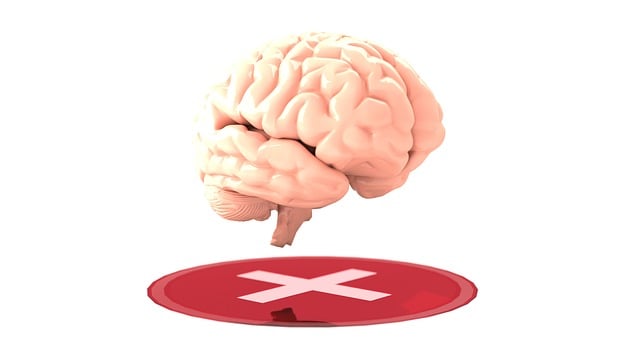In mental health practice, risk management planning is vital for delivering safe and effective therapy for children, especially those with anxiety disorders. Therapists must assess individual patient factors and contextual influences, using evidence-based methods like Exposure and Response Prevention (ERP) with careful monitoring to reduce anxiety symptoms. Effective risk management involves clear communication, informed consent, therapist self-care, and community outreach programs. Cultural sensitivity is key, guiding tailored interventions. ERP techniques help children confront fears and adapt coping mechanisms, while Stress Management Workshops enhance professional resilience. Continuous evaluation of risk management strategies ensures safe and ethical practice, adhering to ethical standards and fostering environments conducive to anxiety relief and emotional regulation.
Mental health professionals face unique challenges, particularly when working with vulnerable children. Effective risk management planning is essential to ensure safety and ethical practice. This article explores key strategies, from understanding risk dynamics in mental health settings to implementing evidence-based techniques like Exposure and Response Prevention (ERP) for mitigating risks specific to child therapy. We’ll guide you through developing a robust risk management plan, emphasizing continuous evaluation and adaptation for optimal patient care.
- Understanding Risk Management in Mental Health Practice
- Identifying Potential Risks and Hazards in Child Therapy
- Applying Exposure and Response Prevention (ERP) Techniques for Risk Mitigation
- Developing a Comprehensive Risk Management Plan
- Ensuring Safety and Ethical Practice: Continuous Evaluation and Adaptation
Understanding Risk Management in Mental Health Practice

In the realm of mental health practice, risk management planning is a cornerstone of delivering safe and effective therapy for children. It involves identifying potential risks, implementing strategies to mitigate those risks, and continuously evaluating the effectiveness of these measures. For therapists, understanding that every client’s experience is unique necessitates a tailored approach to risk management. This includes assessing not only individual patient factors but also contextual influences, such as family dynamics and community resources.
One evidence-based therapy for children with anxiety disorders, Exposure and Response Prevention (ERP), offers a robust framework within risk management planning. By gradually exposing clients to feared situations while preventing avoidance responses, ERP helps reduce anxiety symptoms. However, therapists must be vigilant about potential risks associated with this approach, such as distress or resistance from the child or family. Effective risk management involves establishing clear communication channels, ensuring informed consent, and implementing self-care practices for therapists to prevent burnout. Moreover, community outreach program implementation can enhance risk assessment by providing a broader context for understanding client needs and available support systems.
Identifying Potential Risks and Hazards in Child Therapy

Identifying potential risks and hazards is a crucial step in risk management planning for mental health professionals, especially when working with children. Child therapy settings present unique challenges that demand meticulous consideration. Therapists must be vigilant in assessing factors such as emotional vulnerabilities, past traumatic experiences, and family dynamics to ensure a safe and supportive environment. For instance, exposure and response prevention (ERP) techniques, while highly effective for treating specific phobias, require careful implementation to prevent triggering adverse reactions.
Cultural sensitivity in mental healthcare practice plays a pivotal role in mitigating these risks. Understanding the child’s cultural background, family values, and belief systems helps tailor therapeutic interventions effectively. Additionally, fostering self-care routine development for better mental health among professionals is essential. This includes regular risk assessment, peer supervision, and implementing coping strategies to prevent burnout and maintain clinical integrity. Such proactive measures contribute to a robust risk management framework, ensuring the well-being of both therapists and the children in their care.
Applying Exposure and Response Prevention (ERP) Techniques for Risk Mitigation

Mental health professionals increasingly recognize the power of Exposure and Response Prevention (ERP) techniques as a crucial component of risk management planning. ERP is particularly effective in therapy for children, helping them gradually face and manage anxiety-provoking situations, thoughts, or objects that contribute to emotional distress. By engaging in structured exposure exercises coupled with response prevention strategies, professionals can support clients in modifying maladaptive behaviors and reducing avoidance.
This approach cultivates emotional intelligence by teaching individuals to recognize and regulate their emotions effectively. Through ERP, clients learn to challenge and reframe negative thoughts related to stressful situations, thereby mitigating risks associated with depression prevention. Additionally, stress reduction methods, often integrated into ERP protocols, equip individuals with coping strategies to manage anxiety and promote overall well-being.
Developing a Comprehensive Risk Management Plan

Mental health professionals are tasked with helping clients navigate complex emotional landscapes, which inherently involves managing a variety of risks. Developing a comprehensive risk management plan is a crucial step in ensuring both the safety of patients and the effectiveness of treatment. This strategy should include specific protocols for identifying, assessing, and mitigating potential risks that arise during therapy sessions, especially when working with vulnerable populations such as children.
One effective approach to risk minimization is adopting Exposure and Response Prevention (ERP) techniques, which have proven beneficial in treating anxiety disorders in both adults and children. By gradually exposing clients to feared situations or objects and teaching them adaptive coping strategies, ERP empowers individuals to manage their reactions and reduce avoidance behaviors. Moreover, incorporating regular Stress Management Workshops within the organization can equip professionals with tools to recognize early signs of distress in themselves and their clients, facilitating prompt interventions and fostering a culture of inner strength development.
Ensuring Safety and Ethical Practice: Continuous Evaluation and Adaptation

Mental health professionals must continually evaluate and adapt their risk management strategies to ensure safe and ethical practice. This involves regular reflection on case studies and personal clinical experiences to identify potential risks and vulnerabilities within therapeutic processes. For instance, in treating children with anxiety, therapists employing Exposure and Response Prevention (ERP) techniques should monitor for any signs of retraumatization or adverse reactions during exposure exercises. Regular reassessments allow professionals to adjust their approaches, ensuring the best possible outcomes for clients while maintaining ethical standards.
By adopting a dynamic approach to risk management, mental health practitioners can foster environments conducive to anxiety relief and emotional regulation. This includes staying abreast of evidence-based practices and research developments in child therapy, such as ERP, which facilitates the emotional healing processes essential for their young clients’ well-being. Continuous evaluation and adaptation are cornerstone principles for professionals navigating complex therapeutic landscapes, ultimately contributing to enhanced patient safety and care.
Mental health professionals play a crucial role in nurturing young minds, making risk management planning essential for effective and ethical practice. By understanding potential risks, identifying hazards specific to child therapy, and employing evidence-based techniques like Exposure and Response Prevention (ERP), therapists can create robust safety nets. A comprehensive risk management plan, regularly evaluated and adapted, ensures not only the well-being of clients but also fosters a culture of continuous improvement in therapy for children.










